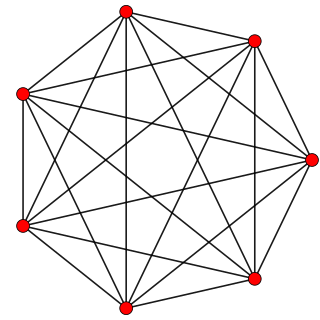Top Qs
Timeline
Chat
Perspective
6-polytope
From Wikipedia, the free encyclopedia
Remove ads
In six-dimensional geometry, a six-dimensional polytope or 6-polytope is a polytope, bounded by 5-polytope facets.
 6-simplex |
 6-orthoplex, 311 |
 6-cube (Hexeract) |
 221 |
 Expanded 6-simplex |
 Rectified 6-orthoplex |
 6-demicube 131 (Demihexeract) |
 122 |
Definition
A 6-polytope is a closed six-dimensional figure with vertices, edges, faces, cells (3-faces), 4-faces, and 5-faces. A vertex is a point where six or more edges meet. An edge is a line segment where four or more faces meet, and a face is a polygon where three or more cells meet. A cell is a polyhedron. A 4-face is a polychoron, and a 5-face is a 5-polytope. Furthermore, the following requirements must be met:
- Each 4-face must join exactly two 5-faces (facets).
- Adjacent facets are not in the same five-dimensional hyperplane.
- The figure is not a compound of other figures which meet the requirements.
Remove ads
Characteristics
The topology of any given 6-polytope is defined by its Betti numbers and torsion coefficients.[1]
The value of the Euler characteristic used to characterise polyhedra does not generalize usefully to higher dimensions, and is zero for all 6-polytopes, whatever their underlying topology. This inadequacy of the Euler characteristic to reliably distinguish between different topologies in higher dimensions led to the discovery of the more sophisticated Betti numbers.[1]
Similarly, the notion of orientability of a polyhedron is insufficient to characterise the surface twistings of toroidal polytopes, and this led to the use of torsion coefficients.[1]
Remove ads
Classification
Summarize
Perspective
6-polytopes may be classified by properties like "convexity" and "symmetry".
- A 6-polytope is convex if its boundary (including its 5-faces, 4-faces, cells, faces and edges) does not intersect itself and the line segment joining any two points of the 6-polytope is contained in the 6-polytope or its interior; otherwise, it is non-convex. Self-intersecting 6-polytope are also known as star 6-polytopes, from analogy with the star-like shapes of the non-convex Kepler-Poinsot polyhedra.
- A regular 6-polytope has all identical regular 5-polytope facets. All regular 6-polytope are convex.
- A semi-regular 6-polytope contains two or more types of regular 4-polytope facets. There is only one such figure, called 221.
- A uniform 6-polytope has a symmetry group under which all vertices are equivalent, and its facets are uniform 5-polytopes. The faces of a uniform polytope must be regular.
- A prismatic 6-polytope is constructed by the Cartesian product of two lower-dimensional polytopes. A prismatic 6-polytope is uniform if its factors are uniform. The 6-cube is prismatic (product of a squares and a cube), but is considered separately because it has symmetries other than those inherited from its factors.
- A 5-space tessellation is the division of five-dimensional Euclidean space into a regular grid of 5-polytope facets. Strictly speaking, tessellations are not 6-polytopes as they do not bound a "6D" volume, but we include them here for the sake of completeness because they are similar in many ways to 6-polytope. A uniform 5-space tessellation is one whose vertices are related by a space group and whose facets are uniform 5-polytopes.
Regular 6-polytopes
Regular 6-polytopes can be generated from Coxeter groups represented by the Schläfli symbol {p,q,r,s,t} with t {p,q,r,s} 5-polytope facets around each cell.
There are only three such convex regular 6-polytopes:
- {3,3,3,3,3} - 6-simplex
- {4,3,3,3,3} - 6-cube
- {3,3,3,3,4} - 6-orthoplex
There are no nonconvex regular polytopes of 5 or more dimensions.
For the three convex regular 6-polytopes, their elements are:
Remove ads
Uniform 6-polytopes
Here are six simple uniform convex 6-polytopes, including the 6-orthoplex repeated with its alternate construction.
The expanded 6-simplex is the vertex figure of the uniform 6-simplex honeycomb, ![]()
![]()
![]()
![]()
![]()
![]()
![]() . The 6-demicube honeycomb,
. The 6-demicube honeycomb, ![]()
![]()
![]()
![]()
![]()
![]()
![]()
![]()
![]() , vertex figure is a rectified 6-orthoplex and facets are the 6-orthoplex and 6-demicube. The uniform 222 honeycomb,
, vertex figure is a rectified 6-orthoplex and facets are the 6-orthoplex and 6-demicube. The uniform 222 honeycomb,![]()
![]()
![]()
![]()
![]()
![]()
![]()
![]()
![]() , has 122 polytope is the vertex figure and 221 facets.
, has 122 polytope is the vertex figure and 221 facets.
Remove ads
References
External links
Wikiwand - on
Seamless Wikipedia browsing. On steroids.
Remove ads
